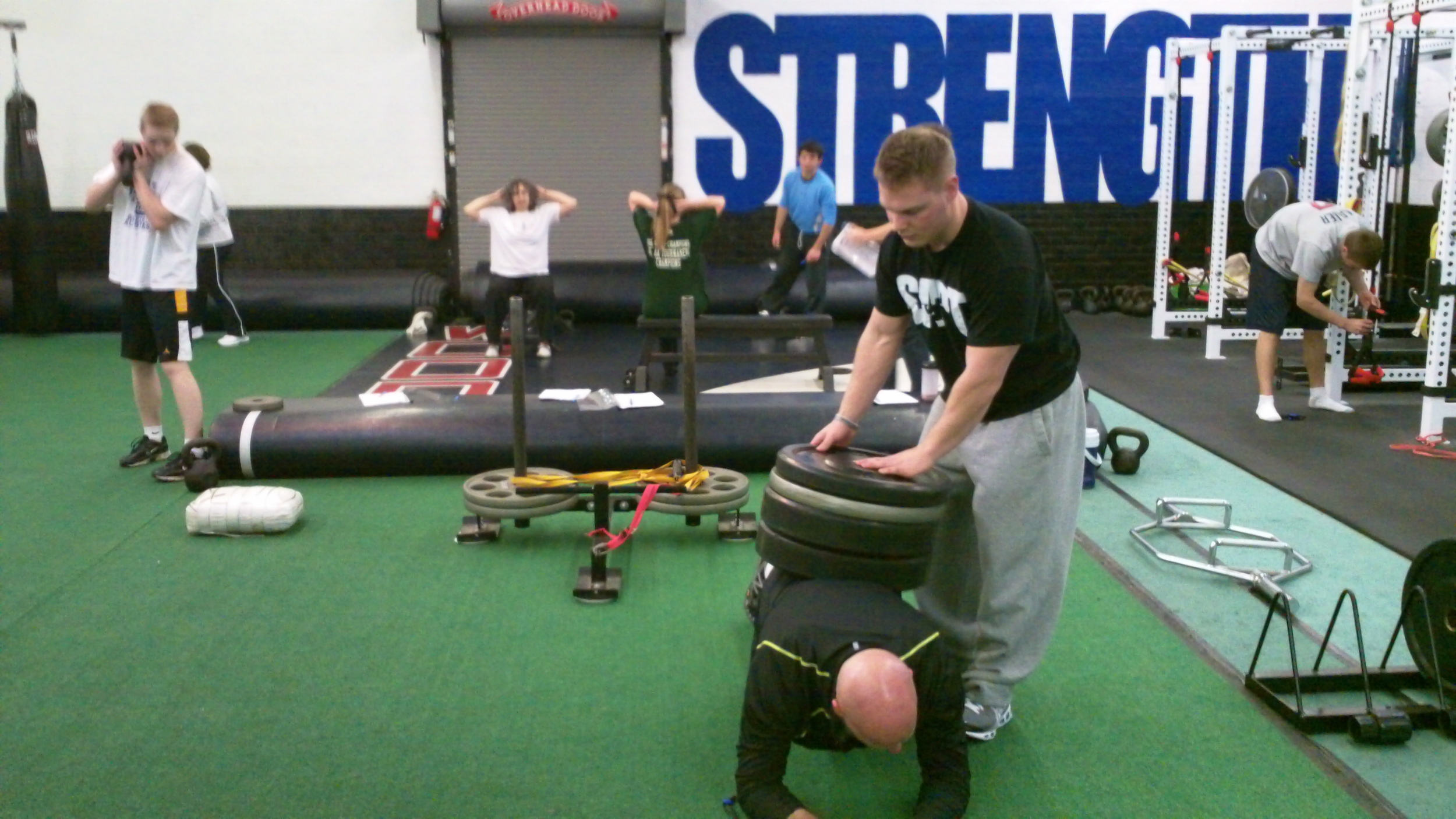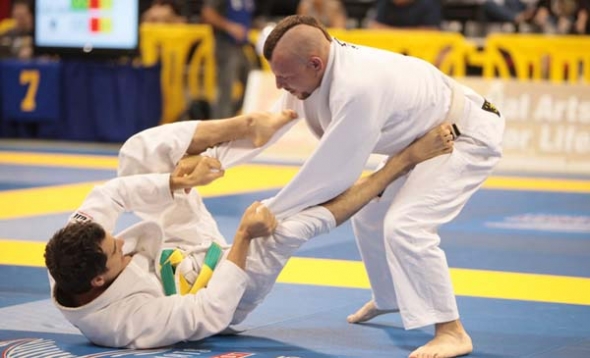SAPT Exercise of the Week: Stir the Pot Alphabet
 When it comes to training someone's "core," I'd often rather have them jump in front of a moving a school bus than perform endless sit-up and crunch variations. However, I've explained the "why" on this site multiple times (and most people are caught up to this information by now anyway), so I won't belabor the point here and now.
Moving on, planks (and their variations) tend to be one of the best bang-for-your-buck exercises when it comes to training the "core," or - the muscles that control the pelvis and thoracic region with respect to the lumbar spine - to put it in "non-bro" terms.
When it comes to training someone's "core," I'd often rather have them jump in front of a moving a school bus than perform endless sit-up and crunch variations. However, I've explained the "why" on this site multiple times (and most people are caught up to this information by now anyway), so I won't belabor the point here and now.
Moving on, planks (and their variations) tend to be one of the best bang-for-your-buck exercises when it comes to training the "core," or - the muscles that control the pelvis and thoracic region with respect to the lumbar spine - to put it in "non-bro" terms.
This is why, once someone has mastered the basic plank, I'll progress them to something more difficult (and fun!) than just holding a static bridge for 60 seconds. This is where something like a move-the-mountain plank or a plank bodysaw will come in handy to make someone's abdominals hate life. Today I'd like to share another plank variation I love to use, that is challenging and also helps keep those with ADD a specified task to focus on.
Here we have SAPT's exercise of the week, along with allowing you to finally understand why I placed a picture of a random man stirring a large pot at the beginning of this post (don't pretend like you didn't doubt me).
Stir the Pot: Alphabet
What is it: This is a progression from the classic "Stir the Pot" exercise that Dr. Stuart McGill invented. It trains your core to resist extension and rotational forces, on top of improving core endurance, a key component in keeping back pain at bay.
The idea for the featured variation actually came to me after Coach Chris invented the Pallof Press: Alphabet back in 2010.
How to do it: Get in a nice plank position (abs tight, glutes SQUEEZED, yadda yadda yadda). Then, trace the alphabet in big, CAPITAL letters. Take your time here. and ensure that there is minimal movement taking place at your low back and hips.
I typically like to progress this by having someone start by tracing just a portion of the alphabet (ex. A-L) and eventually have them work through the entire alphabet. Perform 2-3 sets, working as far through the alphabet as you dare.
To make it even more difficult, you could have someone appear out of nowhere and samurai-kick the ball. I heard my friend Tony Gentilcore mention this for the original stir the pot, and I feel it is a fair progression.
 Why I like it: As mentioned above, it's a good fit for us ADD folk in the crowd. Not to mention it will kick your butt. While an advanced athlete can make a plank very difficult if they put their mind to it and actually focus throughout the entire thing, I honestly can't always count on people to do this. Variations such as Stir the Pot practically force you into staying tight, as otherwise you'll fall over and/or snap your spine in two.
Why I like it: As mentioned above, it's a good fit for us ADD folk in the crowd. Not to mention it will kick your butt. While an advanced athlete can make a plank very difficult if they put their mind to it and actually focus throughout the entire thing, I honestly can't always count on people to do this. Variations such as Stir the Pot practically force you into staying tight, as otherwise you'll fall over and/or snap your spine in two.
I also like this because those of you who train in commercial gyms can do it without any special equipment. Commercial gyms tend to have so many of those stability balls that I often feel like I'm a very small person in the middle of Goliath's equivalent of a Chuck E. Cheese's. This will give you something useful to do with those balls other than throwing them out the window.
SAPT Exercise of the Week: Turtle Rolls for the Anterior Core
Ever since Dr. Stuart McGill (professor of spine biomechanics at the University of Waterloo) unleashed his research on spinal health and published his book, Ultimate Back Fitness and Disorders, the fitness industry was awakened to the fact that the typical human sit-up places up to 3,300N of compressive force on the lumbar spine. For those who are wondering if this is a good thing: it's not. As such, when it comes to enhancing someone's "core" strength, I'm almost always going nix repeated spinal flexion in training (i.e. sit-ups), and opt for improving spinal stability. Think pallof presses, landmines, woodchops, single-arm farmers walks, and planks, to name a few.
Or, I may choose a host of anti-extension exercises to give someone their ab training fix, utilizing any of the 20+ demonstrations I give in the video below:
However, should ALL movements resembling a sit-up be avoided like the bubonic plague? I don't think so.
While I do believe that - nine times out of ten - one should train spinal stability in order to correct low back dysfunction, reduce the risk of injury, and morph into a healthy, high-functioning athlete; there are exceptions to the rule.
For example, if I'm training a number of mixed martial artists (which we're consistently doing at SAPT), are you telling me that I never need to help them improve their abdominal strength for guarding?
Or, if helping someone prepare for a military test, should I avoid having them do sit-ups even though the testing protocol calls for a very specific test in sit-up endurance?
(Disclaimer: What I am NOT saying is that you always need to train people in positions specific to where they find themselves in sport (Ex. If I'm training a boxer do I need to repeatedly punch him in the face?). However, sometimes a small dose of a particular training protocol is needed to maximally prepare someone for their respective event.)
Turtle Rolls
Enter the turtle roll. This is a brutal abdominal exercise that hammers the rectus abdominus, along with the internal and external obliques, to both maintain trunk flexion and resist trunk extension. See the demo below:
How to do it:
- Wrap your hands behind your head and touch your elbows to your knees
- Have a partner SLOWLY rock you up and down, touching your heels to the ground at the top
- Brace your abs HARD. Try not to generate any momentum to "swing" yourself up
- Perform 8-12 repetitions
- A cat walking around you is optional
The beauty of these is that you can do them virtually anywhere, as long as another person is close at hand. It is much harder than it looks to keep your elbows in contact with your knees, especially if your partner is moving you slowly. After you master a bodyweight turtle roll, you can hold a weight plate on top of your head (you won't need much though, trust me).
A couple caveats:
- If you have back pain, I'd avoid this one. You can receive plenty of good ab training via other means
- If adding turtle rolls in a training cycle, be sure to do plenty of work for the erectors and include a healthy dose of thoracic mobility drills to prevent hyperkyphotic postural adaptations in the thoracic spine. You should be doing this anyway, though....GOSH!!
- Don't get too addicted to these. They'll certainly fill your "I need to feel my abs burn" craving but be careful to keep your total volume of spinal flexion work in check
That's it, try it out and let me know what you think.







